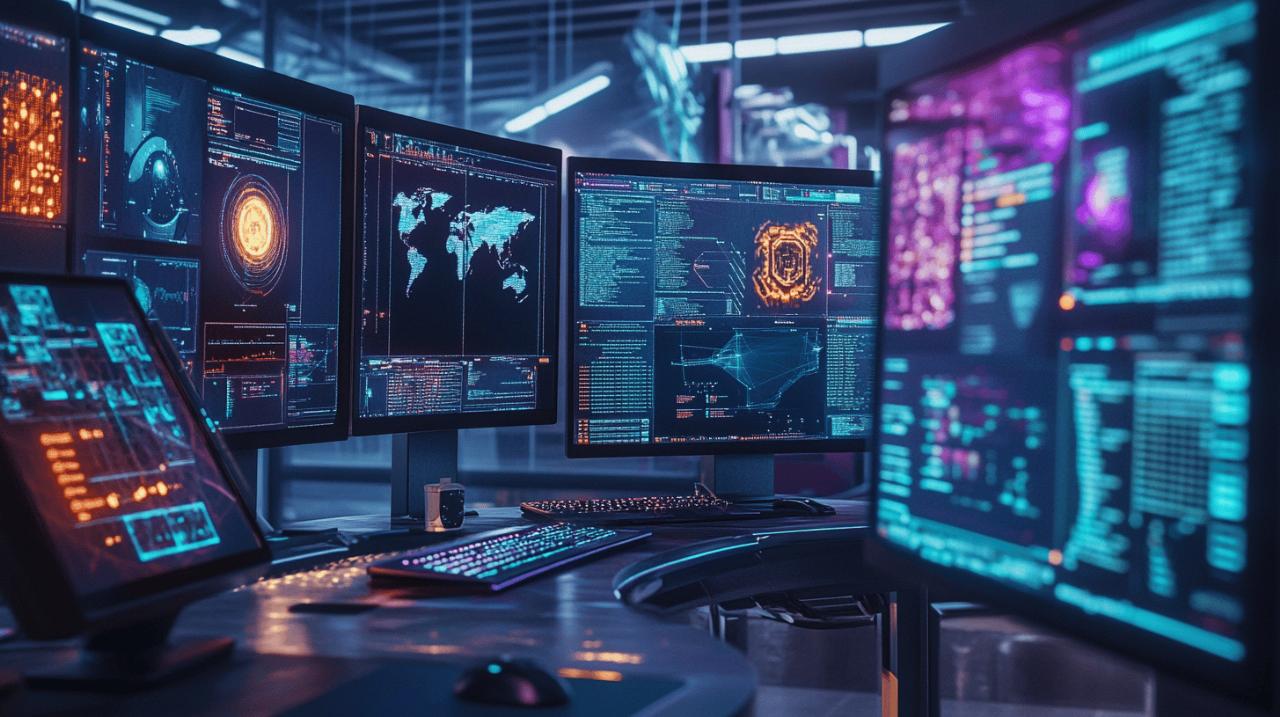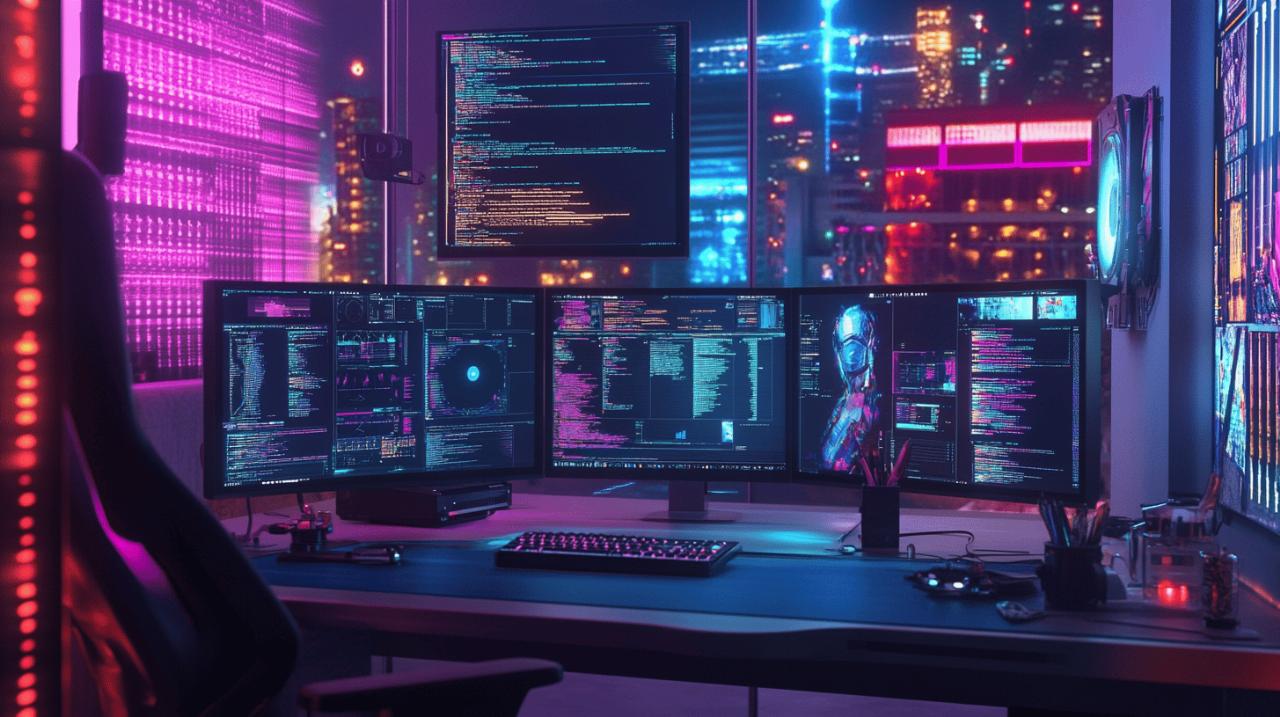The digital landscape of visual creation is being radically transformed by artificial intelligence, offering unprecedented possibilities for artists, designers, and content creators alike. Image GPT stands at the forefront of this revolution, enabling anyone to produce stunning visuals with simple text prompts.
The evolution of ai-powered visual generation
Visual content creation has undergone a dramatic shift with the emergence of sophisticated AI systems capable of generating photorealistic images. These technologies have evolved from basic graphic manipulation tools to complex systems that understand and interpret human creative intent, changing how we approach design and visual storytelling.
From text-based ai to visual intelligence
The journey of AI began primarily with text-based models that processed and generated written content. Now, systems have crossed into the visual realm with remarkable capabilities. Tools like Stable Diffusion produce detailed and realistic images that were previously impossible without professional skills. Users can now simply input descriptive text to generate matching visuals, while Image GPT offers customization options for style, color, and composition that rival traditional design processes. This shift has democratized creative expression across industries from marketing to entertainment.
Breakthrough technologies behind image gpt
The technical foundations powering today’s visual AI are truly revolutionary. Deep learning algorithms analyze vast datasets of visual information to understand patterns and relationships within images. OpenAI’s image generator, now available to all ChatGPT users including those on free tiers, uses GPT-4o to create high-quality, photorealistic images that include metadata indicating their AI origin. The technology solves previous limitations like mangled text and unnatural facial features that plagued early AI art systems. Graphic designers leverage these advancements to expand creative possibilities while saving valuable time in their workflow.
Revolutionizing design workflows with image gpt
Image GPT represents a significant leap forward in visual content creation. Powered by GPT-4o, OpenAI’s image generator delivers high-quality, photorealistic images to all ChatGPT users, including those on the free tier. This powerful AI technology incorporates metadata that clearly identifies the AI origin of each creation, addressing transparency concerns while providing unprecedented creative capabilities.
Tools like MyImageGPT enable users to generate diverse visual content including images, logos, and photos with customizable style, color, and composition options. Stable Diffusion has similarly emerged as a versatile system producing detailed and realistic visuals across multiple formats. These platforms analyze and replicate visual data through sophisticated deep learning processes, transforming how professionals and everyday users approach visual creation.
Streamlining creative processes for professionals
The impact of Image GPT on professional creative workflows cannot be overstated. Graphic designers now have expanded creative possibilities while significantly reducing production time. The technology serves as an invaluable resource for freelancers who need unique visuals quickly, offering various style options and high-quality outputs for client projects.
In marketing, AI image generation produces compelling visuals for campaigns and social media content. The entertainment industry leverages this technology to create detailed visuals for games and films. E-commerce businesses enhance product visualization and customer experience through AI-generated imagery. The collaborative aspects of Image GPT also facilitate better feedback and participation between designers and clients during the creative process.
Democratizing design for non-designers
Image GPT breaks down traditional barriers to visual creation, putting powerful design capabilities in everyone’s hands. Users simply log in, type a prompt or select ‘Surprise Me,’ generate their image, and make edits as needed. The technology even offers specialized options like AI sketch versions for a hand-drawn aesthetic.
The accessibility of these tools marks a fundamental shift in who can create professional-quality visuals. Businesses without dedicated design teams can now produce marketing materials, social media content, and product imagery independently. Artists find new avenues for expression by exploring styles and concepts that might otherwise be beyond their technical abilities. The user-friendly nature of these platforms means that virtually anyone with an idea can transform it into a visual reality.
While Image GPT brings remarkable creative possibilities, it also raises ethical considerations regarding copyright, potential misinformation, and responsible usage. The development of safeguards that balance innovation with ethical standards will be crucial as this technology continues to evolve and reshape the visual content landscape.
Practical applications across industries
Image GPT represents a revolutionary shift in how visual content is created and utilized across various sectors. This AI-powered technology, supported by models like GPT-4o from OpenAI, has made high-quality image generation accessible to everyone – including free tier users. The ability to produce photorealistic images with embedded AI origin metadata marks a significant advancement in the field of visual creation tools.
Stable Diffusion stands out as a particularly powerful tool in this ecosystem, generating remarkably detailed and realistic visuals from simple text prompts. What makes these AI systems truly transformative is their versatility – they can create everything from professional photographs to logos and original artwork, adapting to numerous professional contexts and creative needs.
Marketing and advertising transformations
The marketing landscape has been dramatically reshaped by Image GPT technology. Brands now generate high-quality campaign visuals and social media content without the traditional resource investment. This democratization of visual content creation allows businesses of all sizes to produce professional-grade materials that previously required specialized design teams.
For freelance designers and creative professionals, these tools expand creative possibilities while significantly reducing production time. The collaboration process has also evolved, with AI facilitating more interactive feedback between designers and clients. E-commerce platforms particularly benefit from this technology through enhanced product visualization capabilities, creating more engaging shopping experiences that boost customer confidence and satisfaction.
Educational and training visual resources
Image GPT has opened new frontiers in educational content development. Teachers and instructional designers now create customized visual learning materials tailored to specific educational objectives. The technology allows for quick generation of concept illustrations, historical recreations, and scientific visualizations that make complex ideas more accessible to learners.
Training programs across industries benefit from AI-generated scenarios and simulations that provide realistic visual contexts for skill development. Medical education, technical training, and professional development programs utilize these tools to create detailed visual references that would be costly or impossible to produce conventionally. The ability to adjust style, color, and composition makes these visual resources adaptable to different learning contexts and audience needs.
While bringing tremendous creative potential, this technology raises important ethical questions about copyright, misinformation risks, and responsible usage. Balancing innovation with appropriate safeguards remains a critical consideration as Image GPT continues to transform visual content creation across professional fields.
Ethical considerations in ai-generated imagery
The rise of AI image generators like OpenAI’s GPT-4o, Stable Diffusion, and MyImageGPT has revolutionized visual content creation. These powerful tools enable users to generate photorealistic images from simple text prompts, transforming workflows across industries from marketing to entertainment. While free tier ChatGPT users now have access to high-quality image generation capabilities, this technological advancement brings significant ethical challenges that must be addressed.
Copyright and ownership questions
AI-generated imagery raises complex questions about intellectual property rights. As tools like Stable Diffusion produce detailed and realistic images based on text prompts, the line between inspiration and infringement becomes increasingly blurred. Who owns an AI-generated image? The person who wrote the prompt, the AI system developer, or is it a new category of creative work altogether? This uncertainty creates challenges for creators who integrate AI visuals into commercial projects. The e-commerce sector, which increasingly relies on AI to improve product visualization, must navigate these murky waters carefully. MyImageGPT and similar platforms allow unprecedented customization of images, logos, and photos by adjusting style, color, and composition – yet the legal framework governing these creations remains underdeveloped. Many organizations now include metadata that identifies AI-generated content, but standardized approaches to attribution and licensing are still evolving.
Distinguishing ai art from human creation
The growing sophistication of AI image generators blurs the boundary between human and machine-created art. Modern systems like GPT-4o and Stable Diffusion have overcome earlier limitations such as mangled text and uncanny facial features, making their outputs increasingly indistinguishable from human work. This raises profound questions about authenticity and value in creative fields. Professional graphic designers now use these tools to expand creative possibilities and enhance client collaboration, but must grapple with defining their unique contribution. The entertainment industry leverages AI visuals for games and films, yet audiences may value knowing which elements were machine-generated. The risk of misinformation through deceptive AI imagery presents another significant challenge. While tools like OpenAI’s image generator include metadata to indicate AI origin, this practice isn’t universal. Balancing innovation with responsible usage requires thoughtful safeguards. Artists exploring new creative avenues with AI must consider how their work relates to traditional artistic practice and whether disclosure of AI assistance serves artistic integrity. The future development of these technologies focuses not just on technical improvements but also on ethical frameworks that respect creative traditions while embracing new possibilities.
Future horizons for image gpt technology
Image GPT technology represents a revolutionary shift in visual content creation. As OpenAI’s image generator powered by GPT-4o becomes accessible to all ChatGPT users, including those on free tiers, we’re witnessing the democratization of high-quality, photorealistic image creation. This AI-driven tool is rapidly evolving from a novelty into an essential resource for creative professionals across industries. The inclusion of metadata in generated images helps maintain transparency about their AI origins while offering unprecedented creative capabilities.
Integration with emerging digital platforms
The future of Image GPT lies in its seamless integration with diverse digital ecosystems. Tools like MyImageGPT are already demonstrating the potential for specialized implementations, supported by platforms like Botnation for chatbot creation. As Image GPT technology evolves, we’ll likely see it embedded within marketing platforms to generate campaign visuals, entertainment systems to create game and film assets, and e-commerce platforms to enhance product visualization. The versatility of systems like Stable Diffusion, which produces detailed and realistic images from text prompts, points to a future where AI image generation becomes a standard component of digital workflows. For creative professionals who spent countless hours perfecting visuals, these tools represent significant time savings while maintaining high-quality output. The integration extends beyond creation tools into feedback and collaboration systems, allowing clients and designers to participate actively in the visual development process.
Customization and specialized visual generation
The next frontier for Image GPT technology is deeper customization and specialization. Current tools already allow users to adjust style, color, and composition, but future iterations will likely offer more granular control and industry-specific functions. MyImageGPT demonstrates this trend with focused capabilities for generating images, logos, and photos tailored to specific needs. AI systems using deep learning to analyze and replicate visual data are becoming increasingly sophisticated, addressing previous limitations like mangled text and unrealistic facial features. For graphic designers, these advances expand creative possibilities by facilitating rapid experimentation with different visual styles. In e-commerce, customized AI visuals improve product presentation and enhance customer experience. Artists exploring new creative avenues benefit from AI’s ability to generate unexpected variations and combinations. The growing sophistication of tools like Stable Diffusion suggests an approaching era where AI-generated visuals achieve unprecedented realism while respecting ethical boundaries regarding copyright concerns, misinformation risks, and responsible usage standards. This balance between innovation and ethics will define how Image GPT technology evolves in professional creative contexts.
